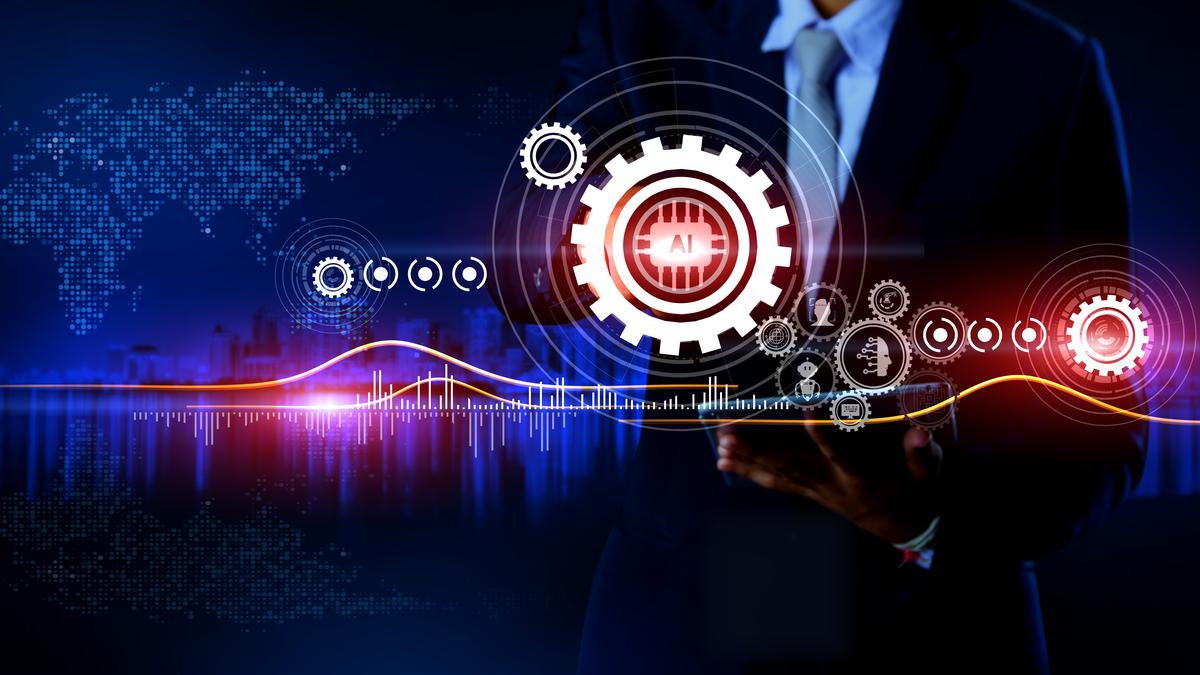The advent of Artificial Intelligence (AI) and generative AI models is examined, with an emphasis on the positive effects, potential job displacement, and opportunities for India, while debunking worries of a robot-dominated future.

Central Idea
- AI developments, notably in the form of Large Language Models and Generative AI, have transformed many facets of our existence. AI has far exceeded our expectations, from automated manufacturing to self-driving cars and chatbots.
What exactly is artificial intelligence (AI)?
- AI is a set of technologies that enables machines to function with more intelligence and to mimic human abilities to sense, comprehend, and act.
- An AI system can also intervene in the physical environment by utilising technologies such as expert systems and inference engines.
- These human-like talents are enhanced by the ability to learn from experience and continuously change over time.
What exactly is generative AI?
- Generative AI, like other types of artificial intelligence, learns how to operate based on past data.
- Instead of simply categorising or identifying data, it generates entirely new material based on that training – a word, an image, or even computer code.
- ChatGPT, a chatbot developed by Microsoft-backed OpenAI and published late last year, is the most well-known generative AI application.
- Because it takes in a text prompt and writes a human-like response, the AI powering it is known as a big language model.
AI’s potential for economic benefit
- PwC analysis: According to the PwC analysis, continuous technical developments in AI will enhance global GDP by 14%, or $15.7 trillion, by 2030. It also estimates that China would reap the most economic benefits from AI, with a projected 26% increase in GDP by 2030.
- According to Goldman Sachs Research, generative AI alone could increase global GDP by 7%, or about $7 trillion, over a 10-year span.
- The study of economic experts done by the Kent A. Clark Centre for Global Markets indicated that 44% of US experts expected a significant increase in GDP per capita owing to AI, while 34% of European experts expected the same.
Adoption of AI has a positive impact.
- Increased productivity: According to a research called Generative AI at Work, done by economists at the Massachusetts Institute of Technology (MIT), AI tools increased worker productivity by 14% and boosted customer satisfaction among customer care agents.
- Improved customer happiness: AI tools have helped to better treatment of customer service employees, which has resulted in increased client satisfaction.
- Retention of employees: The usage of AI technologies in the workplace has been linked to higher employee retention rates, presumably due to better productivity and job satisfaction as a result of AI assistance.
- Work that is faster and smarter: According to a recent poll of employees from LinkedIn’s top 50 firms in the United States, nearly 70% believe AI is assisting them in becoming faster, smarter, and more productive.
- Possibility of large GDP growth: According to PwC research, continuous AI developments might contribute to a 14% increase in global GDP, or $15.7 trillion, by 2030.
- Human-like output generation: Generative AI has the ability to produce human-like output, which can have a beneficial macroeconomic impact by promoting greater human-machine communication and interaction.
Employment difficulties
- Labour replacement: AI technologies have the potential to automate both monotonous and creative labour, potentially displacing some employment.
- Detrimental impact on wages and employment: According to research, the use of robots and automation can have a detrimental influence on wages, employment, and labour share. This effect is most noticeable among blue-collar workers and those with lower levels of education.
- Wage inequality is exacerbated by automation and AI, which harm worker groups specialising in mundane jobs. Wage declines for workers performing regular jobs in industries undergoing automation have contributed to changes in the wage structure during the previous few decades.
- Intensified competition and a winner-takes-all situation: AI adoption may increase firm competition, potentially leading to a winner-takes-all scenario in which early adopters gain major advantages.
- Middle-class job displacement: AI technology, particularly in white-collar industries, may displace middle-class positions, causing difficulties for persons in such occupations. The impact of AI on middle-class employment is unknown, with job losses in several areas possible.
Possibilities for India
- Taking use of the demographic dividend: India’s enormous population provides a chance to capitalise on the demographic dividend. India can harness the potential of its people and use AI to generate economic growth and create job opportunities by investing in AI education and training.
- Focus on online education: As a result of the pandemic, online education has grown in popularity and reliance. India can capitalise on this trend by utilising online channels to provide AI education and reach a larger audience, hence driving the adoption of AI capabilities throughout the country.
- Potential economic benefits: According to the PwC analysis, China is expected to benefit the most economically from AI. However, India may still gain from a concentration on AI education, innovation, and the development of an ecosystem that promotes AI-driven growth. By doing so, India can reap the economic benefits of AI while also increasing its own GDP.
Source: https://www.thehindu.com/opinion/lead/ais-disruptive-economic-impact-an-india-check/article67064846.ece#:~:text=India%2C%20being%20the%20most%20populous,who%20work%20in%20the%20field.
